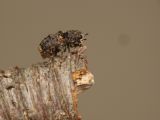
Русские, остановите эту войну! Спасите Свободную Украину!
Russians, stop this war! Save Free Ukraine!
Biodiversity Map
Taxa

Dissoleucas — subordinate taxa:
Taxon count: 1
-
Arthropodaphylum
Click to switch
to select orders
and filters > -
Hexapodasubphylum
Click to switch
to select orders
and filters > -
Insectaclass
Click to switch
to select orders
and filters > -
Coleopteraorder
Click to set
as the main taxon
and as a base
← of the left panel > -
Polyphagasuborder
Click to set
as the main taxon
and as a base
← of the left panel > -
Cucujiformiaseries
Click to set
as the main taxon
and as a base
← of the left panel > -
Curculionoideasuperfamily
Click to set
as the main taxon
and as a base
← of the left panel > -
Anthribidaefamily
Click to set
as the main taxon
and as a base
← of the left panel > -
Anthribinaesubfamily
Click to set
as the main taxon
and as a base
← of the left panel > -
Zygaenodinitribe
Click to set
as the main taxon
and as a base
← of the left panel > -
Dissoleucasgenus
Click to set
as the main taxon
and as a base
← of the left panel >
PL
YES
name status: valid name
BioMap ID: 1026538
taxon code: 4715
taxonomy checked: YES
Data on distribution in Poland

Statistics
- Records: 129
- Publications: 43
- Collections: 10
- Publication authors: 44
- Illustrations (iconography): 1
- Photos (specimen/observation): 1
Taxon description
Gatunek występujący prawie w całej Europie z wyjątkiem północnych obszarów Fennoskandii, notowany poza tym z Kraju Nadmorskiego, Japonii i Borneo. W Polsce, chociaż z niektórych krain jeszcze nie jest znany, występuje prawdopodobnie na całym obszarze prócz wyższych partii górskich. Pojaw postaci dojrzałych przypada na maj i bywają one poławiane do lipca. Larwy żerują w zmurszałych i obumierających gałęziach drzew liściastych. Jako rośliny żywicielskie były podawane różne gatunki z rodzaju dąb, grab i jabłoń.
Illustrations
... browse
 Dissoleucas
Dissoleucasniveirostris
Photos
... browse
 Dissoleucas
Dissoleucasniveirostris
External data sources
- Ostatnie rekordy
-
1115348
 ⊡
⊡ Anthribidae: Dissoleucas niveirostris, PL, Wyżyna Krakowsko-Wieluńska, Brama Krakowska, Obniżenie Cholerzyńskie, małopolskie, Kraków m., Kraków, Bronowice, UTM DA14, 2019, leg. M. Syratt
Anthribidae: Dissoleucas niveirostris, PL, Wyżyna Krakowsko-Wieluńska, Brama Krakowska, Obniżenie Cholerzyńskie, małopolskie, Kraków m., Kraków, Bronowice, UTM DA14, 2019, leg. M. Syratt -
1081537
 ×
× Anthribidae: Dissoleucas niveirostris, PL, Puszcza Białowieska, podlaskie, 2017, leg. R. Plewa
Anthribidae: Dissoleucas niveirostris, PL, Puszcza Białowieska, podlaskie, 2017, leg. R. Plewa -
1080757
 ×
× Anthribidae: Dissoleucas niveirostris, PL, Puszcza Białowieska, Białowieski P.N., podlaskie, 2017, leg. R. Plewa
Anthribidae: Dissoleucas niveirostris, PL, Puszcza Białowieska, Białowieski P.N., podlaskie, 2017, leg. R. Plewa -
1027601
 ×
× Anthribidae: Dissoleucas niveirostris, PL, Podlasie, Biebrzański P.N., podlaskie, Biebrzański P.N., Basen Południowy buffer zone, 1996, leg. M. Wanat (Wanat 2005d)
Anthribidae: Dissoleucas niveirostris, PL, Podlasie, Biebrzański P.N., podlaskie, Biebrzański P.N., Basen Południowy buffer zone, 1996, leg. M. Wanat (Wanat 2005d) -
791886
 ○
○ Anthribidae: Dissoleucas niveirostris, PL, Pojezierze Mazurskie, Biebrzański P.N., podlaskie, UTM FE13, 1996, leg. M. Wanat (Wanat 2005d)
Anthribidae: Dissoleucas niveirostris, PL, Pojezierze Mazurskie, Biebrzański P.N., podlaskie, UTM FE13, 1996, leg. M. Wanat (Wanat 2005d) -
791526
 ○
○ Anthribidae: Dissoleucas niveirostris, PL, Pojezierze Mazurskie, Biebrzański P.N., podlaskie, UTM FE13, 1996, leg. M. Wanat (Wanat 2005d)
Anthribidae: Dissoleucas niveirostris, PL, Pojezierze Mazurskie, Biebrzański P.N., podlaskie, UTM FE13, 1996, leg. M. Wanat (Wanat 2005d) -
781607
 ×
× Anthribidae: Dissoleucas niveirostris, PL, Warszawa, mazowieckie, rez. Las Kabacki im. Stefana Starzyńskiego nature reserve, 2011, leg. J. Tatur-Dytkowski
Anthribidae: Dissoleucas niveirostris, PL, Warszawa, mazowieckie, rez. Las Kabacki im. Stefana Starzyńskiego nature reserve, 2011, leg. J. Tatur-Dytkowski -
746731
 ⊡
⊡ Anthribidae: Dissoleucas niveirostris, PL, Dolny Śląsk, Kamień Śląski, UTM BB90, 2005, leg. M.A. Mazur
Anthribidae: Dissoleucas niveirostris, PL, Dolny Śląsk, Kamień Śląski, UTM BB90, 2005, leg. M.A. Mazur -
741945
 ×
× Anthribidae: Dissoleucas niveirostris, PL (Wanat et al. 2011)
Anthribidae: Dissoleucas niveirostris, PL (Wanat et al. 2011) -
734953
 ×
× Anthribidae: Dissoleucas niveirostris, PL (Borowski et Kieszek 1999)
Anthribidae: Dissoleucas niveirostris, PL (Borowski et Kieszek 1999) - ... more
- Powiązane publikacje
-
Wanat M., Jałoszyński P., Miłkowski M., Ruta R., Sawoniewicz J. 2011. Nowe dane o występowaniu kobielatkowatych (Coleoptera: Anthribidae) w Polsce. Wiad. Entomol., 30(2):69-83.
 full text
full text Show records
Show records -
Mazur M.A. 2011c. Weevils (Coleoptera: Curculionoidea) of the Stobrawski Landscape Park. Pol. Pismo Ent., 80(2):321-342.
 full text
full text Show records
Show records -
Gutowski J.M., Kubisz D., Sućko K., Zub K. 2010b. Sukcesja saproksylicznych chrząszczy (Coleoptera) na powierzchniach pohuraganowych w drzewostanach sosnowych Puszczy Piskiej. Leś. Pr. Bad., 71:279-298.
 Show records
Show records -
Mokrzycki T. 2007. Waloryzacja ekosystemów leśnych Gór Świętokrzyskich na podstawie struktury zgrupowań chrząszczy związanych z pniakami. [In:] Borowski J., Mazur S. (Eds.) Waloryzacja ekosystemów leśnych Gór Świętokrzyskich metodą zooindykacyjną. Wydawnictwo SGGW, Warszawa. pp. 148-193.
 Show records
Show records -
Gosik R. 2006d. Weevils (Curculionoidea) of the middle part of the Bug River Valley. Ann. UMCS, C, 61:7-69.
 Show records
Show records - ... more
- Powiązane zbiory
-
ISEZ PAN
 Show records
Show records -
SGGW KOLiE
 Show records
Show records -
Lasoń A.
 Show records
Show records -
Mazur M.A.
 Show records
Show records -
Mocarski Z.
 Show records
Show records - ... more
- Wykaz powiązanych pozycji
-
Curculionoidea of Poland
 Show records
Show records






